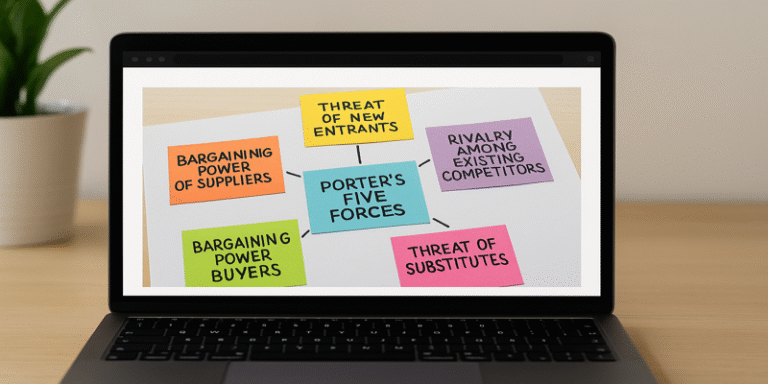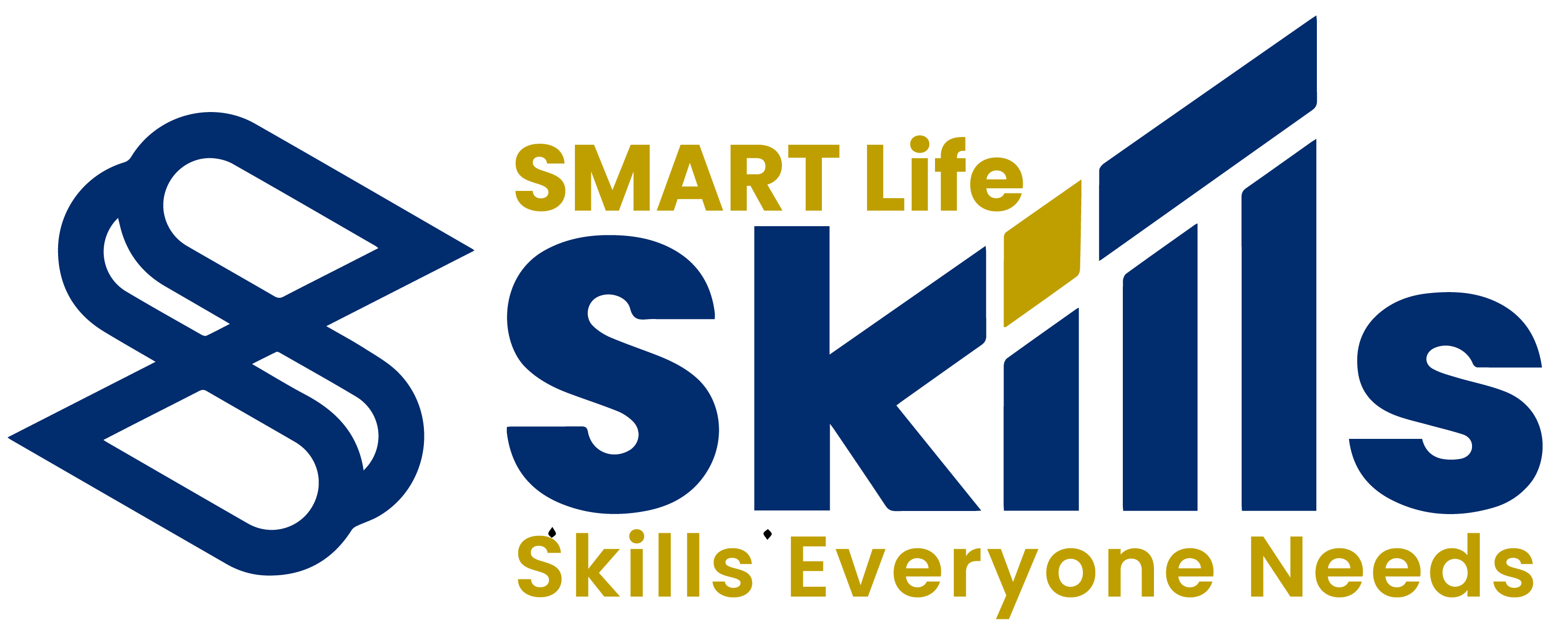In an increasingly competitive global business environment, organisations require analytical frameworks to evaluate industry attractiveness and develop sustainable competitive strategies. One of the most influential tools for this purpose is Porter’s Five Forces model, proposed by Michael E. Porter in his seminal work “Competitive Strategy: Techniques for Analysing Industries and Competitors” (Porter, 1980). The model provides a structured approach to assess the competitive forces that shape an industry’s profitability and strategic positioning. This essay explores the five forces — competitive rivalry, threat of new entrants, threat of substitutes, bargaining power of suppliers, and bargaining power of buyers — and examines their relevance in today’s dynamic business landscape, drawing upon evidence from academic literature, industry examples, and strategic management textbooks.
Overview of Porter’s Five Forces
Porter’s model views industry competition not as a single force but as the outcome of interactions among five underlying determinants (Grant, 2019). These forces collectively determine the intensity of competition and the profitability potential of firms within an industry. According to Porter (2008), understanding these forces allows managers to anticipate shifts in competition and adjust their strategic approaches accordingly.
The five forces include:
- Threat of New Entrants
- Threat of Substitute Products or Services
- Bargaining Power of Suppliers
- Bargaining Power of Buyers
- Rivalry Among Existing Competitors
Each force can either erode or strengthen a firm’s profitability depending on how effectively it is managed.
1.0 Threat of New Entrants
The threat of new entrants determines the degree of difficulty for new firms to enter an industry. When entry barriers are low — such as minimal capital requirements or weak regulatory restrictions — competition intensifies, driving down profitability (Johnson et al., 2023). Conversely, high barriers such as economies of scale, brand loyalty, and patent protection can deter new entrants.
For example, the airline industry exhibits high entry barriers due to massive capital investment, stringent safety regulations, and slot restrictions at major airports (Csernák-Csorba & Tóvölgyi, 2025). By contrast, digital start-ups in sectors like e-commerce and fintech face relatively lower entry barriers, contributing to rapid market saturation (Pan, 2025).
Firms often utilise strategic alliances or technological innovation to raise barriers to entry, as seen in Ant Group’s transformation of China’s financial industry through digital finance ecosystems (Pan, 2025).
2.0 Threat of Substitute Products or Services
Substitutes represent alternative products that fulfil similar needs. A high threat of substitutes limits an industry’s profitability as customers can easily switch. For example, streaming services like Netflix and Disney+ have disrupted traditional cable TV by offering lower prices and greater convenience (Rasugu & Anene, 2025).
In the hospitality industry, Airbnb serves as a substitute for traditional hotels, reshaping competitive dynamics (Oliynyk, 2025). Firms combat substitute threats by enhancing product innovation, brand identity, and customer experience (Kotler & Keller, 2022).
3.0 Bargaining Power of Suppliers
Suppliers exert power when they can influence prices, quality, or availability of materials. Porter (1980) emphasised that supplier power is high when few suppliers exist, products are unique, or switching costs for firms are substantial.
For instance, the semiconductor industry demonstrates significant supplier power; chip manufacturers like TSMC dominate global supply, impacting costs for electronics producers such as Apple and Samsung (Bayeroju, 2025). Conversely, in agricultural sectors, supplier power is relatively weak due to the abundance of producers and the commoditised nature of inputs (Wulandari, 2025).
Strategically, firms can reduce supplier power by vertically integrating supply chains or developing alternative sourcing options (Hitt, Ireland & Hoskisson, 2020).
4.0 Bargaining Power of Buyers
Buyers gain power when they can demand lower prices or higher quality. According to Handoko et al. (2026), digitalisation has enhanced customer influence by increasing price transparency and choice availability. For example, in the telecommunications sector, intense competition among providers gives customers significant bargaining leverage (Rasugu & Anene, 2025).
In contrast, in industries with differentiated offerings such as luxury automobiles, customers have limited bargaining power because products offer unique value propositions (Song, 2025).
To mitigate buyer power, firms often employ loyalty programmes, brand differentiation, and value-added services (Grant, 2019).
5.0 Rivalry Among Existing Competitors
Industry rivalry is the central force in Porter’s model, shaped by factors like industry growth, fixed costs, and product differentiation. Highly competitive industries experience price wars and reduced profit margins. The fast-fashion sector, typified by Shein, Zara, and H&M, illustrates fierce rivalry driven by short product life cycles and low switching costs (Song, 2025).
In contrast, industries with high differentiation and customer loyalty, such as the luxury watch market, exhibit less intense rivalry (Wahyuni & Nugraha, 2025). Strategies such as niche marketing, innovation, and mergers and acquisitions are commonly adopted to mitigate rivalry.
Application of Porter’s Model in Modern Contexts
Modern scholars argue that while Porter’s framework remains relevant, it must adapt to technological disruption and globalisation (Hitt et al., 2020). For example, in the digital economy, platform-based competition alters traditional industry boundaries, blurring distinctions between suppliers, buyers, and substitutes (Usmani et al., 2025).
The construction SME sector, as studied by Handoko et al. (2026), uses the Five Forces to assess strategic weaknesses and develop competitive resilience in digital transformation. Similarly, PT Permodalan Nasional Madani applies the model to craft sustainable competitiveness through innovation and capability development (Kurniawan, 2025).
Emerging literature also links Porter’s model with complementary tools such as SWOT and PESTEL analyses for holistic strategic diagnosis (Csernák-Csorba & Tóvölgyi, 2025). Integrating big data analytics, as suggested by Sholehah et al. (2025), enhances predictive insights into changing industry forces.
Criticisms and Limitations
While Porter’s model provides a robust analytical framework, critics highlight its static nature and limited adaptability to dynamic markets (Johnson et al., 2023). In fast-evolving sectors like technology, competitive forces change rapidly due to innovation cycles, network effects, and regulatory shifts (Grant, 2019).
Furthermore, the model assumes industry boundaries are clearly defined, which may not hold true for digital platforms such as Amazon and Google that operate across multiple industries. Another limitation lies in its profit-centric perspective, overlooking social and environmental sustainability — a growing determinant of competitive advantage in the 21st century (Wulandari, 2025).
Despite these limitations, Porter’s Five Forces remains an indispensable tool when complemented by dynamic capability theory and stakeholder analysis (Bayeroju, 2025).
Practical Examples
- Netflix: Reconfigured the entertainment industry by addressing substitute threats and maintaining customer loyalty through content personalisation and global scalability.
- Tesla: Overcame high entry barriers in the automotive industry through innovation, vertical integration, and brand differentiation.
- Coca-Cola: Sustains low buyer power via brand dominance and distribution control.
- Shein: Exemplifies how digital agility and data analytics reshape rivalry in the fast-fashion sector (Song, 2025).
Porter’s Five Forces framework continues to serve as a cornerstone of strategic management, enabling firms to assess industry structure and craft competitive strategies. Although its traditional formulation requires adaptation to contemporary realities such as digitalisation, global integration, and sustainability, the model remains relevant for strategic diagnosis and foresight.
Effective utilisation of the model requires managers to not only evaluate existing competitive pressures but also to anticipate emerging forces shaped by technological innovation, regulatory changes, and consumer behaviour. Ultimately, understanding and strategically responding to Porter’s Five Forces equips organisations with the capacity to achieve sustainable competitive advantage in complex, evolving markets.
References
Bayeroju, O.F. (2025). Strategic Diagnostics-to-Transformation Framework for Achieving Competitiveness in Global Enterprises. MultiResearch Journal.
Csernák-Csorba, K. & Tóvölgyi, S. (2025). The Role of Management Theories and Tools in Creating Added Value. Periodica Polytechnica Civil Engineering, 69(4), pp.45–58.
Grant, R.M. (2019). Contemporary Strategy Analysis. 10th ed. Wiley.
Handoko, I., Effendi, R. & Kurniawan, C. (2026). Business Model Analysis to Strengthen Competitiveness in Construction Services SME. Journal of Innovation and Digital Business.
Hitt, M.A., Ireland, R.D. & Hoskisson, R.E. (2020). Strategic Management: Competitiveness and Globalization. 13th ed. Cengage Learning.
Johnson, G., Scholes, K. & Whittington, R. (2023). Exploring Corporate Strategy. 12th ed. Pearson Education.
Kurniawan, D. (2025). Strategic Direction for Sustainable Competitiveness at PT Permodalan Nasional Madani. International Journal of Integrative Studies, 5(2), pp.112–126.
Kotler, P. & Keller, K.L. (2022). Marketing Management. 16th ed. Pearson.
Pan, K. (2025). Ant Group’s Transformative Impact on China’s Financial Industry. MIT Sloan School of Management.
Porter, M.E. (1980). Competitive Strategy: Techniques for Analysing Industries and Competitors. Free Press.
Porter, M.E. (2008). The Five Competitive Forces That Shape Strategy. Harvard Business Review, 86(1), pp.78–93.
Rasugu, J.K. & Anene, E. (2025). Strategic Response on the Competitiveness of Pay TV Companies in Kenya. International Journal of Human Resource and Business Administration, 5(1), pp.368–418.
Sholehah, U., Ardyansyah, F. & Nasik, K. (2025). Optimising Big Data for Human Resource Development in Madura’s Halal Tourism. Academia Open Journal.
Song, Y. (2025). Analysis of Global Expansion and Strategic Responses on Shein’s Strategies. Finance and Economics Journal.
Wulandari, D.A.R. (2025). Profiling Condition of MSME to Increase Agricultural Competitiveness. BIO Web of Conferences.
Wahyuni, A.P. & Nugraha, A. (2025). Marketing Strategy Implementation in Hydroponic Farming Enterprises. Jurnal Agroinfo Galuh, 17(2), pp.15–25.









